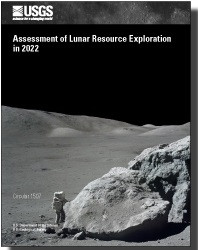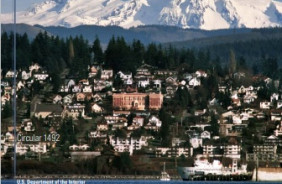
Product Details
- Product Number
- 534318
- Series
- CIR-1507
- Scale
- NO SCALE
- Alternate ID
- 21-1507
- ISBN
- 978-1-4113-4515-7
- Authors
- JOSHUA A COYAN
- Version Date
- 01/01/2022
- Media
- Paper
- Format
- Bound
Additional Details
- Description
-
Assessment of Lunar Resource Exploration in 2022
Circular 1507
By: Laszlo P. Keszthelyi, Joshua A. Coyan, Kristen A. Bennett, Lillian R. Ostrach, Lisa R. Gaddis, Travis S. J. Gabriel, and Justin Hagerty
https://doi.org/10.3133/cir1507
First posted May 9, 2023
For additional information, contact:
Astrogeology Research Program staff Astrogeology Science Center
https://www.usgs.gov/centers/astrogeology-science-center/connect
U.S. Geological Survey
https://usgs.gov/
2255 N. Gemini Dr.
Flagstaff, AZ 86001
Abstract
The idea of mining the Moon, once purely science-fiction, is now on the verge of becoming reality. Taking advantage of the resources on the Moon is part of the plans of many nations and some enterprising commercial entities; demonstrating in-situ (in place) resource utilization near the lunar south pole is an explicit goal of the United States’ Artemis program. Economic extraction and sustainable management of these resources require understanding the nature, quantity, and quality of each resource. This publication aims to provide a relatively simple, but technically rigorous, assessment of the status of lunar resource exploration in 2022.
Building on the experience of the U.S. Geological Survey in conducting resource assessments for Earth, we propose a general methodology for quantitative lunar resources assessments. Lunar resources can be categorized as energy, mineral, and water and classified with respect to their certainty and their recoverability. The portion of the technically recoverable resource that can be converted to a commodity within budgetary and other mission constraints can be classified as a "reserve."
For energy resources, solar energy is known to be especially abundant along some high ridges near the lunar poles and the technology to exploit it is mature. Mineral resources, largely in the form of loose rock powder that covers the surface of the Moon, are also widely accessible in large quantities. Many different technologies to convert this material into useful commodities (such as landing pads and oxygen) are currently being developed and are likely to be available for industrial-scale application within 30 years. Water ice almost certainly exists in the polar regions of the Moon but there are fundamental unanswered questions about when and how the ice formed—leaving us without knowledge of the form, quantity, quality, and distribution of lunar ice. Until rover missions bring new ground truth data, lunar ice will remain a highly speculative resource that may be both limited and non-renewable.
- Height In Inches
- 11.000
- Length In Inches
- 8.500
- Two Sided
- Yes
- Pieces
- 1
- Languages
- English





